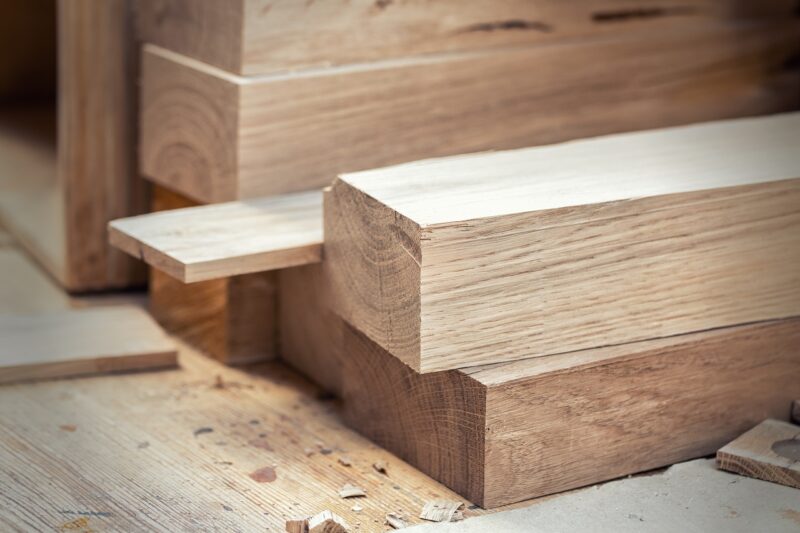Published: 07/05/25 By: Mike Bekin
It almost goes without saying that Oak is one of the oldest construction materials used in the UK. It has been a staple of tools and homes since medieval times, and was frequently recorded in building accounts from the reign of Henry III (1216 – 1272 AD) onwards. The longevity and durability of Oak are renowned globally, and at EcoChoice we consistently recommend it as a reliable timber for various projects.
But to ensure your Oak is up for the job at hand, it needs to be correctly graded. This is where Oak classifications come into play, and we have put everything you need to know about them (and how they will influence your construction) in this guide.
What Is D30 and D40 Timber?
In structural applications, Oak is classified into specific visual grades, each corresponding to a particular strength class. On the surface, the visual grades for structural oak are:
- TH1: D40
- THa: D40
- TH2: D30
- THb: D30
However, it is crucial to note that while D40 is technically possible, it is extremely rare and very difficult to source. So, in 99% of cases, D30 is the most practical choice for structural applications, such as beams and structural framing.
For non-structural applications, for example decking and cladding, you will not need a strength-graded timber.
How is the Structural Grading of Timber Determined?
The strength grading of oak usually occurs through visual inspection.This looks at various factors which affect the properties of the timber, including:
- Grain orientation
- Slope of grain
- Knot size
- Splits and checks
- Wane (bark along the edges)
- Distortion (twist, cup, bowing)
After visual grading, timber is usually given either a D30 strength grade or is left ungraded, making its suitability for construction clear. A government-issued UKCA Declaration of Performance will also be supplied.
The Uses of D30 Timber in Construction
D30 Oak timber can be used for heavy-duty construction projects. This includes load-bearing applications, with the high density and strength of graded Oak making it ideal for timber-framed homes and structural beams. It will not need to be treated before use, reducing the need for potentially harmful chemicals and boosting the eco-friendly credentials of your project.
Opting for D30 Oak also allows you to use smaller boards to achieve the structural integrity you need. Do note, though, that these can warp during drying, and need to be kiln-dried carefully and slowly to the required moisture content (between 16-20%, usually).
Non-graded Oak is used for applications which are not load-bearing, such as exterior furniture, cladding and fencing. Despite not being D30 timber, it still offers fantastic durability and is a brilliant choice for a variety of projects.
Sustainably Sourced D30 Oak
Whether you are looking for D30 Oak for structural beams, trusses, or house frames, or just timber boards which are not strength graded, source yours sustainably at EcoChoice. We are committed to sourcing Oak from responsibly managed forests, and we work with independent certifiers such as the FSC and PEFC. This ensures each Oak tree removed is replaced naturally, maintaining biodiversity and ecological balance. By choosing EcoChoice Oak timber, you can help preserve the world’s forests for future generations.
Start an Order of D30 Oak
Ready to order D30 Oak? We can help. Learn more about your options and start an order today by getting in touch with our team.
Tags: Oak, Structural grading, Timber
Categories: Insights
